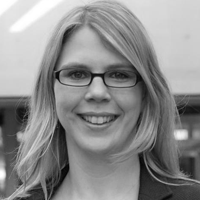Interest | Julia Metag
"If you know what groups exist and how they differ with regard to interest and other variables, you can target these groups quite well from a science communication perspective."

2018 Interview Highlights:
How does your work address the idea of interest in science?
Interest is one of the defining variables that explains attitudes of these different audiences toward science.
Why is understanding those differences important?
If you know that some people show high interest in science, for example, and they’re also highly educated and use scientific information a lot, you know how to reach them. For those less interested in science, if you know what defines them, then you can target them more properly.
How is an interest in science similar to or different from identity as a scientist or motivation to engage in science?
I think interest is different from science motivation or science identity. With regard to science motivation, I think that motivations lie behind interest. People might be interested in science, for example, because they need scientific information for their school work, their homework, or whatever. Interest can change quickly depending on the situation someone is in.
I think that identity is constructed over a longer period of time and also has to do with what kind of beliefs and values people have, so it’s a more generalist construct and it’s a more stable trait of an individual person.
How can practitioners—museum educators or other communicators—use this type of segmentation research that you’re doing?
These segments have been differentiated as target groups so practitioners can look at whether there are similar groups in the population they’re interested in. Then they can try and tease out these groups and target them with specific communication strategies. It also helps them to understand what other variables are related to scientific interest or what other characteristics of these groups are correlated with scientific interest. For example, whether people who are interested in science also have higher trust in science, whether they use information more often. For example, if they know that highly interested people look for information on the internet more and that people with lower interest maybe only coincidentally locate scientific information, then they can adjust their communication strategies accordingly.
What attitudes towards science exist in the Swiss population and other populations?
What we found for Switzerland is that there are four different groups. We have a cluster that we call the sciencephiles, who are really highly interested in science and generally feel very, very positive toward science. A second group is quite similar; we call them critically interested, and they also show high interest, but they are a little bit more impartial toward science. There’s a large cluster that we call the passive supporters, who are the mainstream. They show medium interest. Then we have a small fourth cluster that we call the disengaged, and these people have the lowest interest in science. There aren’t many segmentation studies out yet on attitudes toward science, but according to the ones I know, this group of disengaged people with low interest is found in every country. If this is where most people are, then communication practitioners might be interested in how to reach this group and get them interested in science.
Where do you see research like this going in the next 10 years?
I think that research, as well as, for example, work that foundations are doing in this field, is aimed at developing strategies to reach the disengaged group, the people who have little interest in science. We need to find the right ways to test communication strategies so we can reach these people better. This might mean using different researching methods and measures of how people actually come into contact with science in their everyday lives. As we did in our survey-based research, academics are including more behavioral observations of people to find out how they actually get in touch with science in their everyday lives. We’re studying people from these different groups, what differences exist in their everyday lives, and how they get in contact with science.